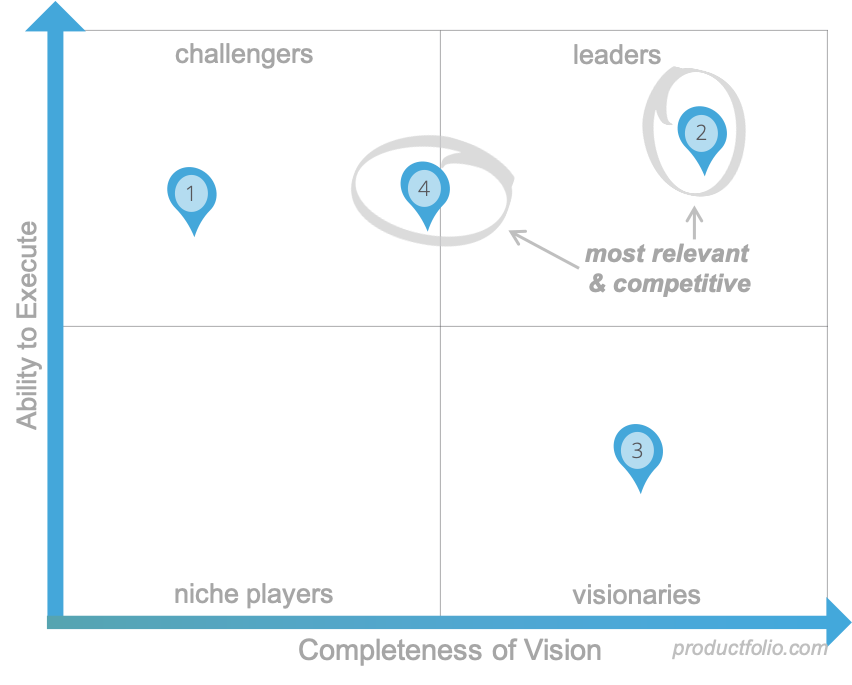What is Gartner’s Magic Quadrant?
A good understanding of the players in an industry is valuable to an organization when it comes to getting its investment decisions right. The Gartner Magic Quadrant is a useful tool to this end if you play in or are interested in the technology sector as it provides you with the true big picture.

What is the Gartner Magic Quadrant?
The Magic Quadrant is a two-dimensional framework that is used to assess groups of players in technology markets. It explores the competitive capability of tech providers in fast-growing markets with differentiation. Gartner describes it as “a culmination of research in a specific market, giving you a wide-angle view of the relative positions of the market’s competitors.”
More specifically, Gartner Magic Quadrant is a series of reports of research into diverse tech markets published once every 1-2 years. This means there are several dozens of these reports, each focusing on a specific tech market. For instance, there are reports for content service platforms, Machine Learning, printers, and Application Security Testing among many others.
These market research reports are produced using Gartner’s proprietary qualitative data analysis techniques. They show market trends and feature a matrix – the two-dimensional framework – that assesses the strengths and weaknesses of providers in a market. The Magic Quadrant comes from the idea of Gideon Gardner, who was a leading technology sector analyst on Wall Street. The company he started had been using this framework for analyzing tech companies for years before its name became public in the 1990s.
Rating Criteria
Gartner’s Magic Quadrant rates or divides tech providers into categories using two criteria:
- Completeness of Vision
- Ability to Execute
Completeness of Vision is a reflection of how innovative a vendor is relative to the competition. Are other vendors reacting to the innovative enhancements it offers or is it the other way round? This also has to do with how well a vendor’s view on market development matches Gartner’s.
Ability to Execute, on the other hand, relates to how effectively a vendor’s vision is being executed. It takes into consideration multiple factors, including product development, market responsiveness, sales and distribution channels, and financial viability. How well a vendor rates based on these criteria determines where it goes in the Magic Quadrant matrix.
Categories of Providers
The graphical framework has two axes. On the x-axis is Completeness of Vision and along the y-axis is Ability to Execute. Providers are placed in one of four quadrants relative to how they score on these two considerations.
The four quadrants or categories are as follow:
Leaders – In this quadrant, you have providers with the highest composite scores for the criteria. These score high both on completeness of vision and ability to execute. They execute well on their vision, dominate their industry, and have great long-term prospects.
Visionaries – Like the leaders, these providers score high on completeness of vision. But they lack the ability to execute well on their vision. They have a good grasp of the direction of the product, market, or industry. However, they fall short of being able to make that great vision see the light of day.
Challengers – These are the reverse of the visionaries. They have an amazing ability to execute but score low on completeness of vision. Interestingly, Challengers execute so well that they may constitute a threat to Leaders, especially in the short term. They, however, do not display a good grasp of the future direction.
Niche Players – The providers here score low both on completeness of vision and ability to execute. They may play successfully in small segments or markets but are unable to outperform others through innovation. They lack a complete vision and can’t even execute even if they do have one. Niche players aren’t necessarily small providers.
Usefulness of the Magic Quadrant
The most obvious benefit of this framework, or report, is that it provides you with a comprehensive overview of the players in a tech industry. Arranging competitors along two axes makes it easier to see their relative positions in the big picture.
While a Magic Quadrant may help you see how your company compares against other players in your industry, it is aimed more toward investors or hiring businesses. Gartner recommends it as “a first step to understanding the technology providers you might consider for a specific investment opportunity.”
The framework offers a good means of quickly assessing providers based on their vision and ability. It lets you know the relative positioning of each company in the competitive landscape, including its strengths and weaknesses. The reports let investors or hiring businesses know what providers best match their specific needs.
Leaders will obviously capture the attention of most. However, others categories are worthy of consideration. A niche player, which some might advise against, could support a business’s needs more than even a leader in some cases. The goals of the hiring business determine what is most suitable. Another way a Gartner Magic Quadrant can be useful is in identifying players capable of creating new markets or segments. This is good for future growth.


